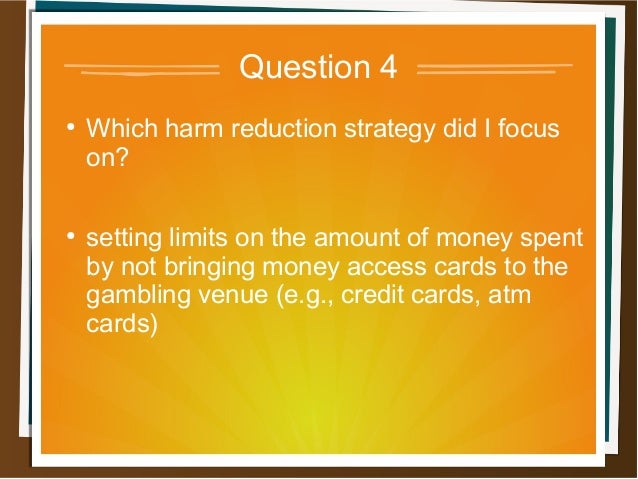Harm Reduction Strategies For Gambling
Prevention of harms related to gambling requires investment in population based approaches, say Heather Wardle and colleagues ### Key messages In 2017 the gambling regulator for Great Britain, the Gambling Commission, described problem gambling as a public health concern (box 1)3 and emphasised the need to increase protection from harm.4 In 2018 the Faculty of Public Health released a position. Identifies a range of harm prevention and reduction strategies that Council can support in addition to the Planning Scheme. Purpose The Policy aims to: identify Council’s gambling harm reduction commitments and provide specific guidance in relation to their application. Internet gambling provides a unique environment with design mechanics and data-driven opportunities that can impact gambling-related harms. Some elements of Internet gambling including isolation, lack of interruption, and constant, easy access have been argued to pose specific risks. However, identifiable player accounts enable identification of behavioral risk markers and personalized private.
- Scores on the harm reduction strategies subscale were negatively associated with gambling quantity. There was a small effect for harm reduction strategies on gambling quantity (d = 0.15). At Step 2, the only significant interaction was between participant’s sex and use of harm reduction strategies on gambling quantity.
- Harm minimisation campaigns are informed by gaming research, including the Queensland household gambling survey. This survey identifies changes in gambling behaviours, at risk demographics, and assesses impacts in the broader gambling regulatory environment at a community level.
Many regions have policies and programs to limit exposure to gambling and protect people from gambling harms. At the same time, regions may allow the promotion of gambling through advertising and marketing. For instance, the broadcasting of sports events may be accompanied by gambling commercials, and gambling company logos may be displayed on the field and on players’ uniforms.
A variety of programs have been used to prevent and reduce gambling harms. Some regions have well-developed school-based programs for teens and young adults to prevent the development of gambling problems. Public awareness campaigns aim to influence people’s attitudes and knowledge about gambling. However, many of these campaigns have yet to include guidelines on safe gambling. There is weak evidence that these campaigns can influence gambling behaviours.
Harm Reduction Strategies For Gambling Problems


Stronger evidence is available for resources that target features of gambling products or venues. For example, pop-up messages that warn players of risky gambling behaviours can be effective. Messages have more impact if they are displayed in the centre of the screen, interrupt play, and require players to actively remove them.
Self-exclusion programs are available to people who have concerns about their gambling behaviours. These programs allow people to ban themselves from specific gambling venues or websites for a period of time. There is evidence that self-exclusion results in less gambling and improved well-being; however, self-exclusion programs are under-used in many regions.
Download the two-page Gambling Resources Factor summary (PDF)
Also available in: Francais Spanish Mandarin

Harm Reduction Strategies For Gambling

Harm Reduction Strategies For Gambling Addiction
Download the Gambling Resources Factor section from the Conceptual Framework of Harmful Gambling (PDF)
Harm Reduction Strategies For Gambling Disorder
Download the complete Conceptual Framework of Harmful Gambling (PDF)